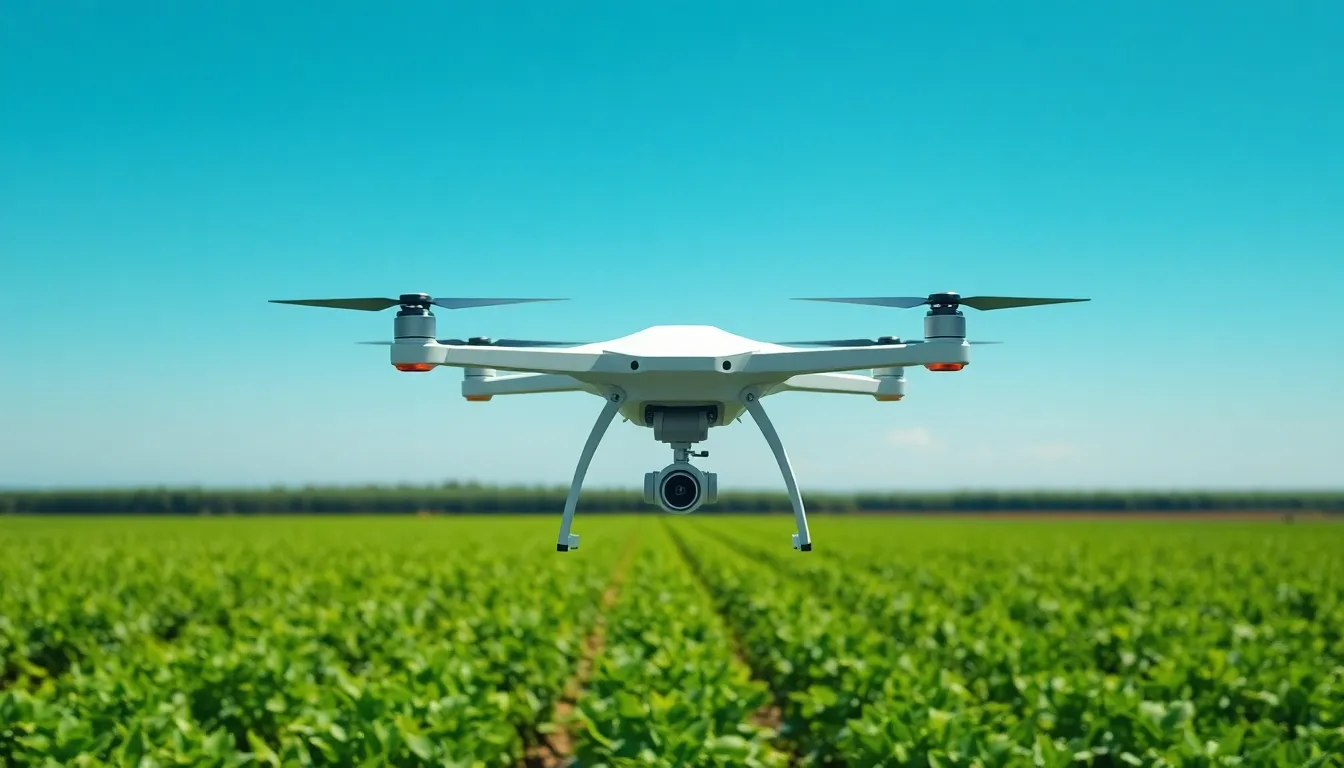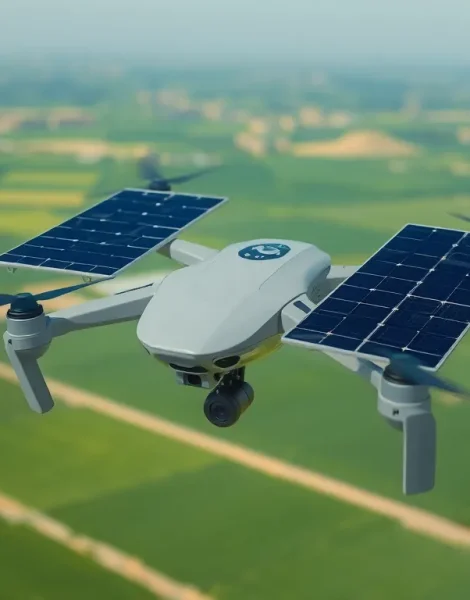Imagine a drone that never runs out of battery—sounds like a dream, right? Enter the world of solar-powered drones, where technology meets sustainability in the sky. These high-flying wonders harness the sun’s energy, soaring through the air while leaving a minimal carbon footprint. It’s like having a personal pilot that never needs a coffee break!
Table of Contents
ToggleOverview of Solar-Powered Drones
Solar-powered drones utilize solar panels to convert sunlight into energy, enabling flight without dependence on traditional fuels. These drones often feature lightweight designs to maximize efficiency and optimize solar energy absorption. Capable of prolonged flight durations, they represent a revolutionary approach to aerial technology.
Most solar-powered drones rely on photovoltaic cells, which generate electricity from sunlight. Environmental benefits are significant; they emit minimal greenhouse gases, contributing to sustainability efforts. In addition, these drones reduce the need for frequent battery recharging, allowing for extended missions in remote areas.
Applications vary widely. Agricultural monitoring, disaster relief, and environmental research benefit from the extended flight capabilities of solar-powered drones. For example, deployment in agricultural fields can enhance crop monitoring through real-time data collection without environmental harm.
The efficiency of solar-powered drones is remarkable. Some models can achieve up to 28 hours of continuous flight time, significantly outlasting traditional battery-operated drones. Companies and researchers continuously develop advanced materials and technologies to improve energy capture and storage.
These drones also offer innovative solutions for communication and surveillance. Constant flight enables persistent monitoring of specific areas, enhancing security measures. As technology progresses, solar-powered drones are expected to become even more integrated into various industries, fostering a more sustainable future for aerial operations.
Benefits of Solar-Powered Drones

Solar-powered drones offer significant advantages, particularly in sustainability and cost-effectiveness. Their ability to operate using renewable energy minimizes reliance on fossil fuels.
Environmental Impact
These drones contribute positively to the environment by reducing carbon emissions. Operating on solar energy lowers their carbon footprint compared to traditional drones. By utilizing photovoltaic cells, solar-powered drones convert sunlight into electricity efficiently. This process significantly curtails greenhouse gas emissions, promoting environmental preservation. Additionally, their lightweight designs enhance energy absorption, allowing for longer flight durations without harmful impacts on ecosystems. Applications in agricultural monitoring and environmental research further showcase how these drones collect data while supporting conservation efforts.
Cost Efficiency
Solar-powered drones prove to be cost-efficient in the long run. Dependence on free solar energy eliminates expenses related to fuel and minimizes operational costs. Over time, savings arise from reduced maintenance and battery replacement compared to conventional drones. Many models achieve continuous flight times of up to 28 hours, which decreases the frequency of charging intervals. Businesses, particularly in sectors like agriculture and surveillance, experience significant budget benefits through increased productivity and longer operational hours. As technology improves, the initial investment becomes more justified by ongoing savings and enhanced operational efficiencies.
Key Technologies Behind Solar-Powered Drones
Solar-powered drones rely on advanced technologies that enhance their energy efficiency and operational capabilities. Two primary components play crucial roles in this process: solar cells and battery systems.
Solar Cells
Solar cells serve as a vital element in converting sunlight into usable energy. Constructed from photovoltaic materials, these cells directly transform sunlight into electricity. Various types of solar cells are utilized, including monocrystalline and polycrystalline, each with distinct efficiencies. Drones equipped with high-efficiency solar cells can achieve optimal energy capture, extending flight durations significantly. These systems can maintain operational reliability even during cloudy conditions, making them versatile for diverse environments. They often cover the drone’s wings and body, maximizing surface area and energy absorption.
Battery Systems
Battery systems complement solar cells by storing energy generated from sunlight. Lithium-ion batteries are most commonly used due to their high energy density and longevity. These batteries provide power during low-sunlight conditions or at night. Optimized charging systems prevent overcharging, enhancing battery lifespan and performance. Advanced battery management systems monitor energy consumption and storage levels, ensuring efficient use. The interplay between solar cells and battery systems allows drones to maintain functionality and extend operational windows, making them more resilient for applications such as environmental monitoring or disaster response.
Applications of Solar-Powered Drones
Solar-powered drones demonstrate versatility through various applications across multiple fields. They provide sustainable solutions while offering excellent operational efficiency.
Agricultural Uses
Agriculture benefits significantly from solar-powered drones. They facilitate precision farming practices, enabling farmers to monitor crop health through real-time aerial imagery. Drones equipped with multispectral sensors assess vegetation health, identifying areas that require attention. Crop mapping and irrigation management become more efficient using these drones, reducing waste and optimizing resource use. Farmers can monitor large areas faster without needing extensive ground surveys. The enhanced flight times allow for thorough exploration, making them essential tools in modern agronomy.
Surveillance and Monitoring
Surveillance applications utilize solar-powered drones for their long endurance capabilities. These drones provide continuous monitoring of critical areas, including borders, facilities, and urban environments. They deliver real-time data, enhancing situational awareness for security agencies. Using solar energy eliminates the need for frequent recharging, extending operational periods significantly. Furthermore, they gather intelligence with minimal human intervention, reducing risks to personnel. Advanced imaging technologies onboard facilitate detailed reconnaissance, making them invaluable assets in crisis management and security operations.
Challenges and Limitations
Solar-powered drones encounter several challenges that impact their efficiency and operational capacity. Limited sunlight hours restrict flight time, especially during cloudy or rainy days. Energy storage remains a significant concern; current battery technologies might not fully harness the energy generated during peak sun hours.
Weight constraints affect the design and functionality of these drones. Adding additional solar panels or batteries can increase weight, which reduces the overall efficiency of flight. Extensive flight durations are achievable, but when payloads exceed optimal limits, performance suffers.
Weather conditions also pose a challenge. High winds can destabilize flight paths, making accurate navigation difficult. Additionally, temperature extremes might affect both solar panel efficiency and battery performance.
Technological advancements are necessary to overcome these limitations. Research in advanced materials could improve energy capture, making solar drones viable in various conditions. Investing in better energy storage solutions is crucial to support longer operational periods, particularly at night.
Cost is another factor that impacts widespread adoption. Initial investments for high-efficiency models can be prohibitive for many users. This creates a barrier for entities looking to transition from traditional drones to solar-powered alternatives.
While solar-powered drones offer significant advantages, they also face challenges that affect their efficiency and capability. Addressing financial, technological, and environmental constraints remains essential for broader implementation in various sectors.
Solar-powered drones represent a significant leap forward in aerial technology. Their ability to operate sustainably while minimizing carbon footprints makes them a game-changer in various industries. As advancements in solar cell efficiency and battery technology continue, these drones will likely become even more versatile and cost-effective.
The challenges they face, such as weather limitations and initial investment costs, are being addressed through ongoing research and innovation. With their potential for extended flight times and reduced operational costs, solar-powered drones are poised to play a crucial role in agriculture, surveillance, and environmental monitoring. Embracing this technology not only enhances operational efficiency but also contributes to a greener future.









